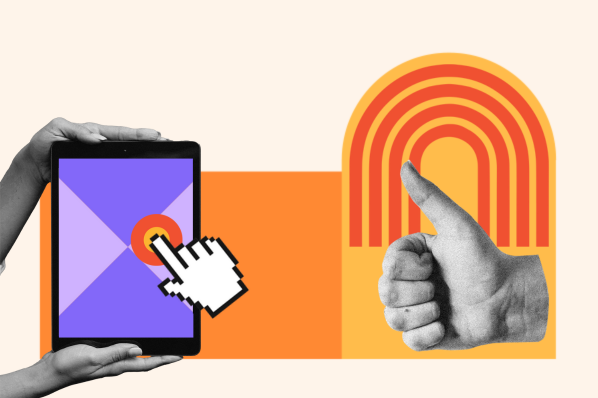In this post, I will walk you through the competitor analysis that UX researchers complete. You‘ll learn more about UX competitive analysis, why it’s crucial, how to get started, and even see an example to help get the creative juices flowing.
Table of Contents
- What is competitive analysis in UX?
- Why is the competitor analysis UX research so important?
- How to Get Started with Competitor UX Analysis
- Running My Own UX Competitive Analysis
- Best Practices for Competitive Analysis UX Research
- Use competitor analysis UX research to inspire your site design.
What is competitive analysis in UX?
UX competitive analysis is helpful for designers looking to gain insight into what works for the competition — and what doesn't. Competitive analysis is a user experience research method that helps you better understand similar websites your users visit. Let me give you an example. If you're working on creating a website for a SaaS startup, you should complete a competitor analysis UX audit on other similar companies.
You might wonder if a UX competitive analysis wastes valuable time, money, and resources. The answer is no. Walking through the process lets you learn what already exists and how it functions.
You‘ll learn the intricacies of competitors’ site features, flow, and structure. And no, this doesn‘t just apply to websites — you can use it for apps or products, too. Most importantly, you’ll experience firsthand using the competitor's site. Then, you can use that information to create a site that delights visitors.
Ultimately, thanks to what you learn through the competitive analysis process, UX designers can apply findings to ensure your website or app is up to par. For instance, you can identify recurring trends or themes through competitive analysis. You can also gain insight into user expectations and needs, shaping how designers build your site.
When should you complete a competitor analysis?
When is the best time to complete a competitor analysis?
The sooner, the better. With competitor analysis, UX researchers will better understand what needs to happen (or shouldn‘t) to make your site or app successful. Therefore, if you wait too long to complete this step, you’ll likely have to backtrack.
If you're applying competitor analysis UX research to site creation and starting from scratch, ensure this step is complete before your team starts designing. Or, if you're remodeling your website, I suggest doing this at the early stages of the site refresh.
Of course, new competitors can pop up at any time, so make sure you revisit your findings and open and re-evaluate if it's time to complete another analysis. This will help ensure your site is up to par with others dominating the market.
Why is the competitor analysis UX research so important?
The competitor analysis UX researchers complete is crucial to your site‘s success because it provides insights into making your website go above and beyond what’s already out there. It might not matter if that competitor is larger and more powerful than your small startup if the competitor's site is finicky and frustrates visitors due to navigation issues.
Here's why you should do competitor analysis UX research:
1. Recognize opportunities to stand out.
Turn on an opportunistic mindset. View every mistake your competitors make as an opportunity to turn the tables in your favor.
For instance, I first look at what features customers love in my competitors‘ products. Then, I move to what’s missing—are there things competitors don't offer? If so, I aim to be the first to provide them and attract new customers.
I also try to notice any confusing or annoying parts on competitor websites. Once I spot them, I’m like, “Alright, let's make mine smoother and more user-friendly.”
2. Discover unmet user needs.
Competitor UX analysis can reveal gaps in the market where user needs are not being fully met.
Analyzing reviews, app store ratings, and social media comments about competitor products can show user frustrations and unmet needs. Look for common issues like confusing interfaces, missing features, or difficult workflows.
Sometimes, a competitor‘s feature might seem useful at first, but it can have problems that frustrate users. That’s why I always look for workarounds users employ or negative comments about a seemingly positive feature.
Are there functionalities underutilized or have the potential to be more helpful? This could show a gap in user education or a need for improvement in the feature itself.
Pro tip: Explore threads on Reddit and Quora and/or Facebook/Slack communities discussing tasks-to-be-done with your competitor’s product. You may reveal uncommon workflows, as well as dissatisfaction and product gaps you can address in your following interations.
3. Learn from competitors’ mistakes.
Many UX mistakes are recurring. Competitor UX analysis allows you to see where others have stumbled and avoid making similar design errors. Learning from these pitfalls can save you time, money, and frustration in the long run.
4. For inspiration and benchmarking.
Competitor UX analysis is also a great source of inspiration for innovative features and design approaches. You can learn from what others are doing well and adapt these ideas to your own product while still maintaining your unique identity.
Pro tip: Take a look at the indirect competitors in your niche to pick up some unique ideas that you can roll into your product.
5. Spot design trends — meet (or exceed) expectations.
Just like fashion, design fads come and go. Competitor UX analysis is your shortcut to staying current. By analyzing what your competitors are doing, you see what design features are popular and what user expectations are these days.
This lets you be the first to include these features in your product, keeping it fresh and attractive to users.
How to Get Started with Competitor UX Analysis
In this chapter, I'll walk you through the seven steps of competitor UX analysis I carry out myself. Take it as your starting point.
1. Define your goals.
First, I write down clear, specific objectives for my analysis to keep things focused. For example, I want to pinpoint specific gaps in workflow X.
Questions I always ask myself:
- What do I want to achieve with this competitor UX analysis?
- What makes this business unique? Is their target audience comparable to mine?
- Are there specific features I'm investigating? (e.g., signing in, creating an account, searching on the site, making a purchase, signing up, product card, etc.)
2. Identify your direct and indirect competitors.
At this point, I choose competitors to analyze to keep the scope manageable and my findings comprehensive.
Pro tip: I list 3-4 rivals and select the ones that are most relevant to my business and 2 that are non-direct. I judge the site by considering its target audiences, unique features, and market positioning.
3. Set up a tracking system and document your findings.
I use Google Sheets to organize and store my findings and for easy access with my teammates.
Pro tip: I create a spreadsheet with columns for each feature I investigate (e.g., search bar, navigation menu, footer) and make notes.
4. Conduct a heuristic evaluation.
I found that heuristic principles work best, so I use them in my analysis to evaluate competitors' site usability. Heuristic evaluations are a great way to catch usability issues early in the design process, and they're relatively inexpensive to conduct compared to other methods.
They‘re not a perfect solution, though, since they rely on the evaluators’ expertise and can’t uncover everything, but overall, the results are pretty good.
Pro tip: I always narrow my focus. I zoom in on what I want to test, whether it's a few functions or just one. This way, I gather more useful data from my testing and make important improvements sooner.
5. Analyze competitors' features.
In this stage, I customize my analysis based on the specific features of interest.
Pro tip: I visit each competitor’s website, and identify and note down the critical features in my spreadsheet (e.g., prominence of the search bar, usability of the navigation menu, comprehensiveness of the footer).
6. Experience the features as a user.
This step is super important, but it’s often overlooked.
You‘ve got to put yourself in the shoes of someone who’s never been to your website before. So, at this point, I use the websites as if I'm a first-time user to get real insights into the user experience.
Pro tip: I play around with each feature and write down my experiences—what I find easy or tricky, any accessibility issues, or things that frustrate me.
Pro tip: Return to your findings on users’ dissatisfaction with your competitors’ features and test out your product workflow for the same task. This way, you’ll uncover hidden bumps or realize that your product is fine from this standpoint.
7. Compare and apply insights to your project.
Look for patterns and differences among the competitors to identify strengths and weaknesses. Share your findings with the design and development team.
Pro tip: I compile a list of must-have features and improvements from the competitor UX analysis. Then, I chat with the team about these insights to incorporate them into our roadmap.
Running My Own UX Competitive Analysis
Now, I‘ll show you how I compared two beauty websites. Here’s my experience browsing the iNNBEAUTY PROJECT and Tower 28, focusing on features that influence my decision to shop:
Homepage
iNNBEAUTY PROJECT: They caught my eye with a mix of features—bestsellers, user-friendly navigation, trendy social media content, and informative skincare blogs. However, while the site feels fresh and modern with great categorization, I miss that personalized touch; it seems too focused on promoting products and pushing sales.
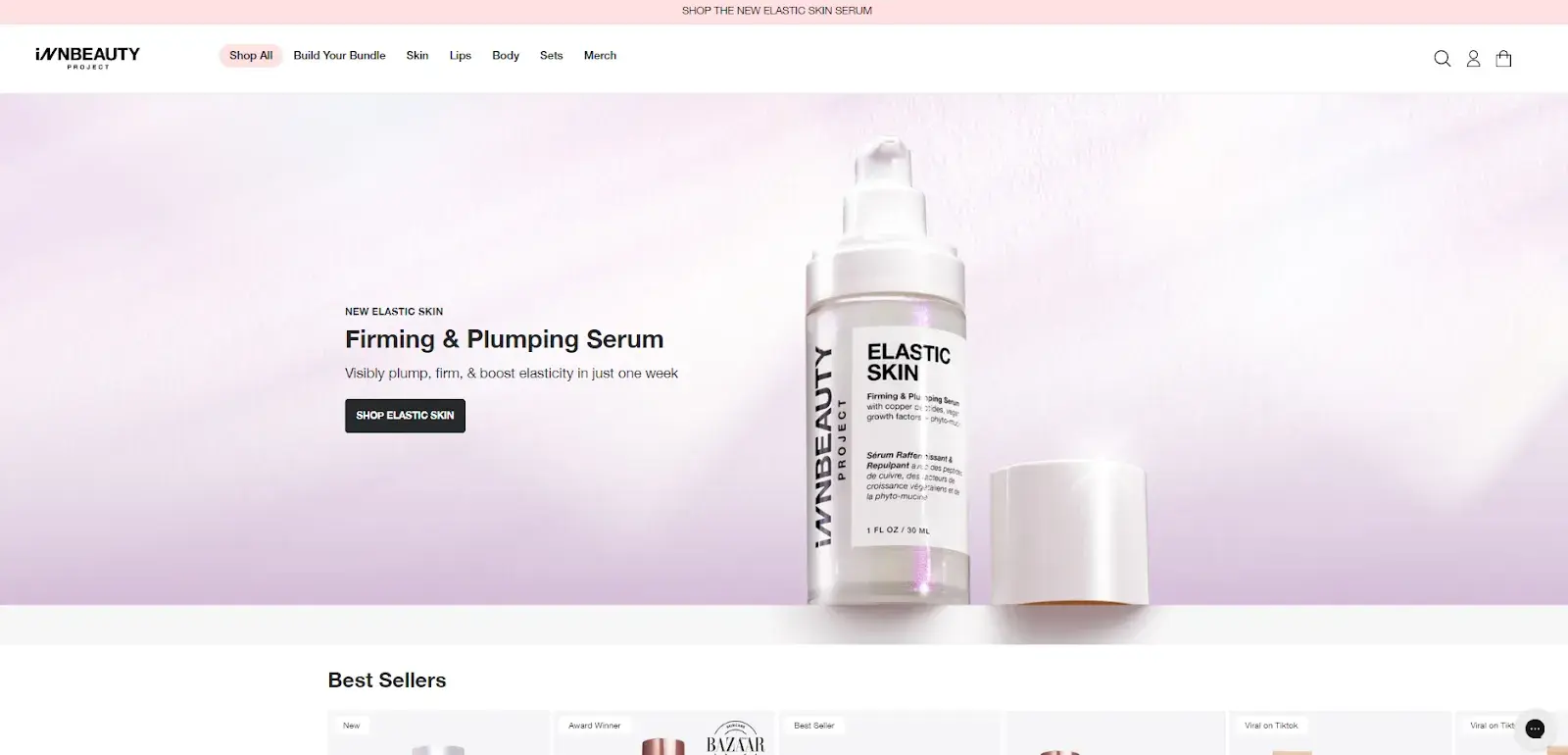
Tower 28: Unlike the iNNBEAUTY PROJECT, Tower 28 takes a user-centric approach, especially for those with sensitive skin. The website highlights messages and products formulated specifically for sensitive skin concerns. This focus feels more personalized—like they really understand my needs.

Email Sign-Up
iNNBEAUTY PROJECT: Straight to the point—10% discount for signing up, which is a great incentive for new customers. The email sign-up is neatly placed in the footer, keeping the website tidy.

Tower 28: There’s a “Find My Shade” button in the right corner, which honestly confused me. I expected it to lead to an app where I could enter my details or analyze my skin to find the perfect shade. Instead, it took me to a newsletter signup, which I think isn't the best idea. And I believe other ladies would agree with me.

Social Media Buttons
iNNBEAUTY PROJECT: Social media icons are placed right above the newsletter signup in the footer. However, there are no social media names, which could users who are not that familiar with all the icons.

Tower 28: This one's done well. Tower 28 lists their social media accounts clearly at the bottom of the page–no icons, just names.
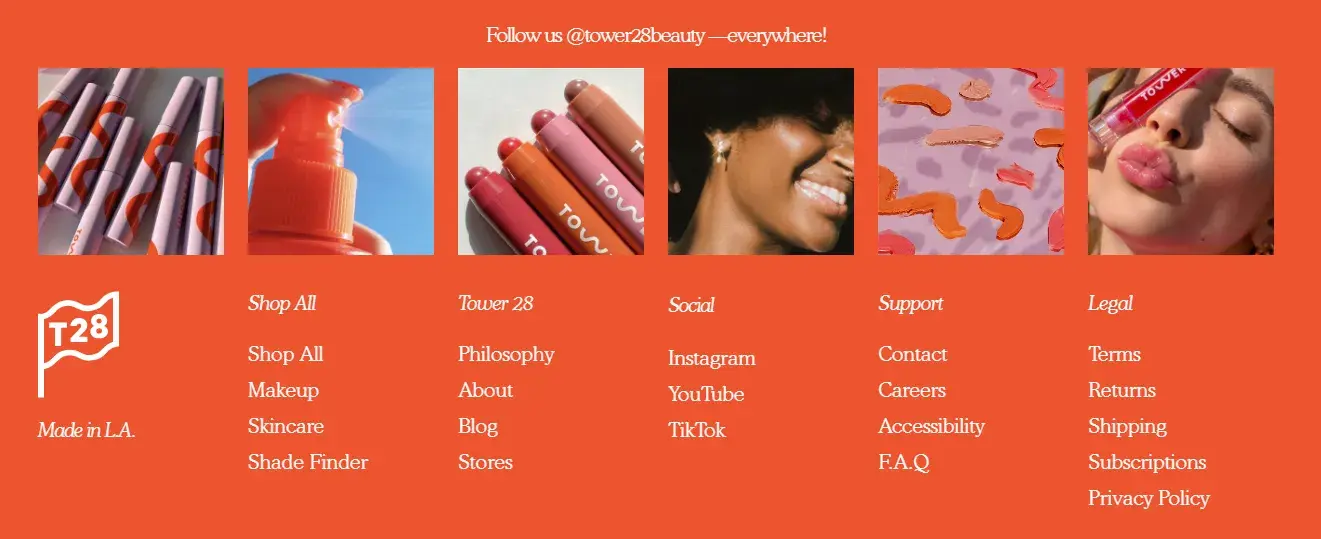
Customer Support
iNNBBEAUTY PROJECT: They win major points here for having a helpful automated chatbox. Getting quick answers to any questions you might have before or during the buying process is always more than welcome.

Tower 28: Unfortunately, there’s no chatbox feature. If you need support, you can reach out via email or social media. On the bright side, there's a helpful FAQ section where I found most of my answers.
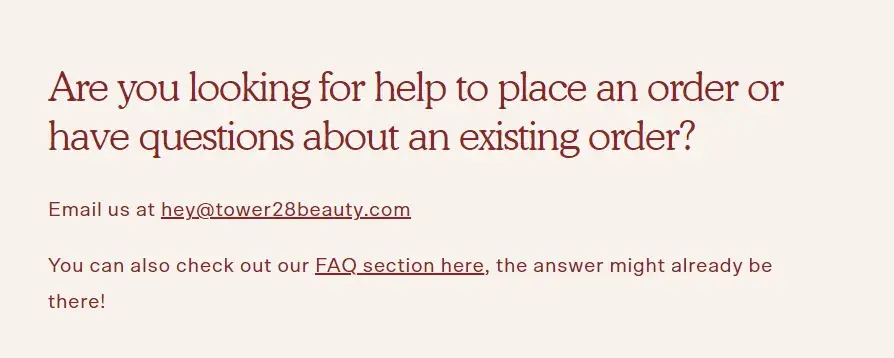
Customer Reviews
iNNBEAUTY PROJECT: The review from a happy customer is at the bottom of the website. Honestly, I don’t like this part at all. The use of generic phrases like “This product is incredible” doesn‘t tell you anything specific about what makes the product effective. The review doesn’t mention any details about the reviewer‘s skin type, what concerns the product addressed, or how long they’ve been using it. It looks a bit “staged”.
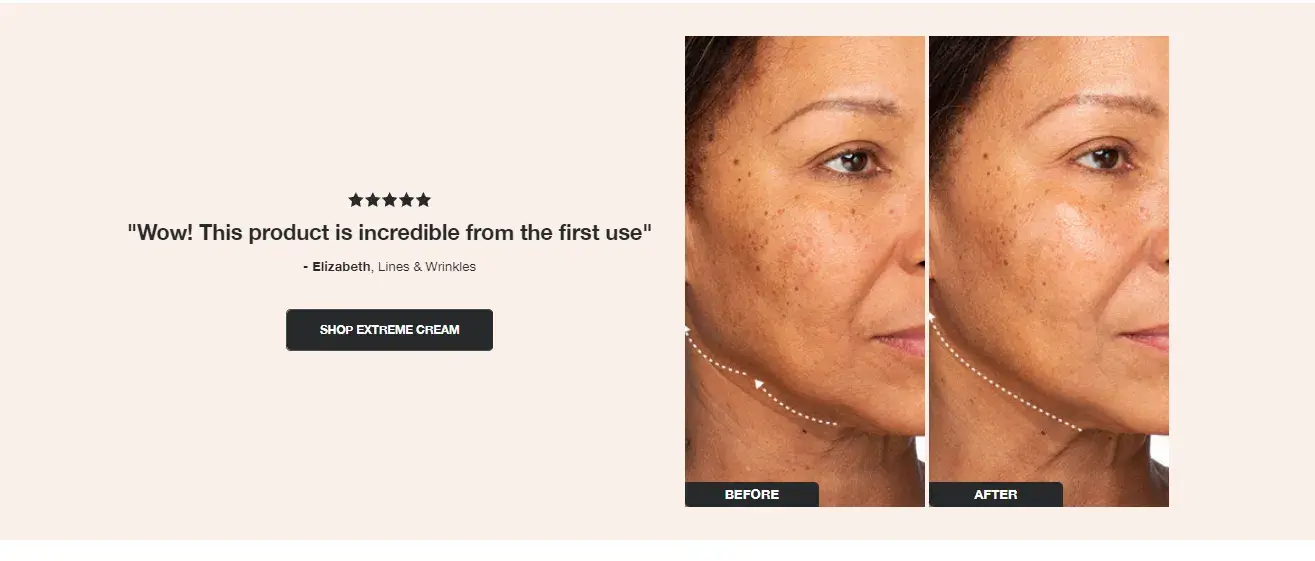
Tower 28: There aren‘t any customer stories, and it would be good to have them on websites like this. Instead, there’s a note from co-founder Amy, which I also like because it's written conversationally and avoids sounding too promotional. Well-written messages like this one can be persuasive because they combine personal experience with details about the brand and a bit of emotion.
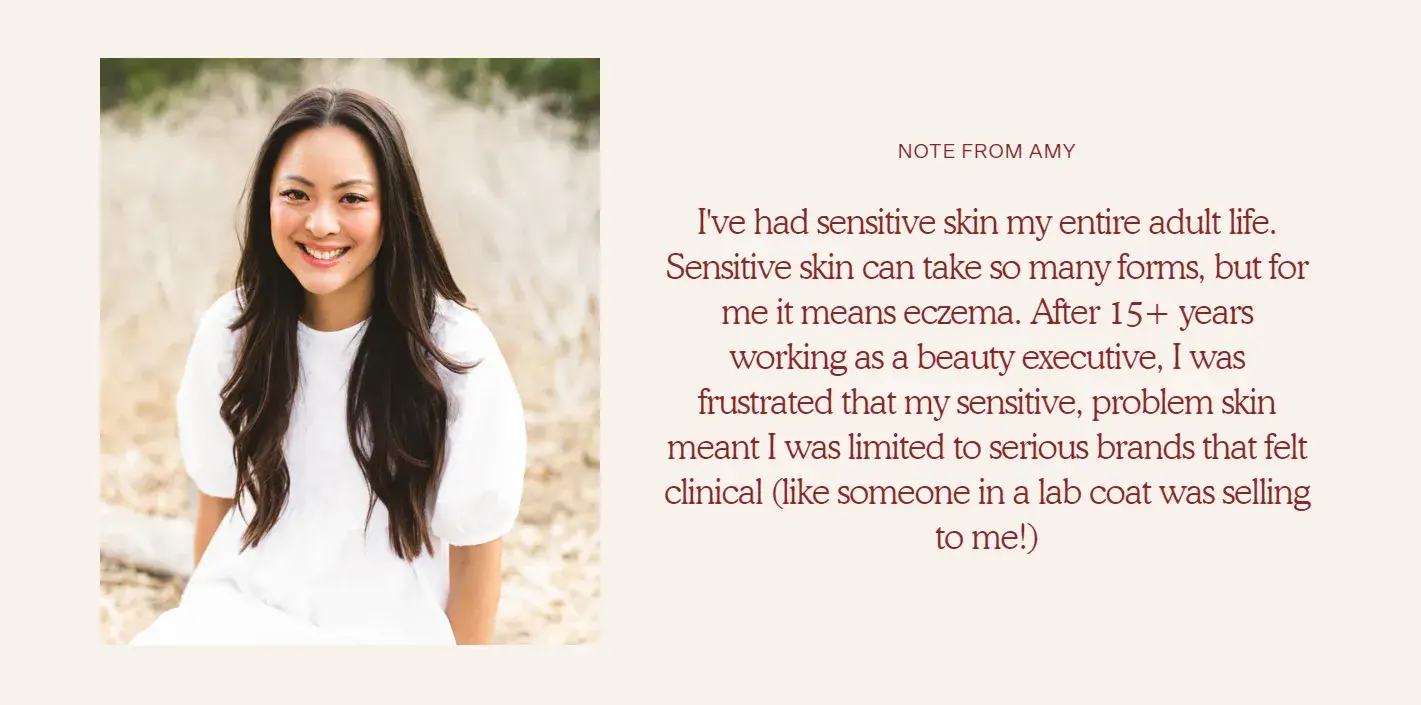
Overall, I like both websites. iNNBEAUTY PROJECT has perfect categorization and immediate chat support, while Tower 28 prioritizes customer trust and personalized product selection.
Honestly, my final preference leans towards Tower 28 because of its more trendy design, personalized copy, and smooth operation. But I’d love to see a chatbot there soon.
When it comes to navigating, both sites are intuitive, and I didn't encounter any issues or glitches.
As a side note (from a reader’s perspective), I think both sites could benefit from making their blogs more visually engaging. It’d be good to break up the wall of text with relevant images and use a clearer structure for more enjoyable reading.
Best Practices for Competitive Analysis UX Research
Now that you're armed with knowledge on getting started and examples to help guide you, let me share some competitive analysis UX research best practices to remember.
Don't overdo it.
There‘s no reason to compare yourself to 10 competitors. With this form of research, more isn’t necessarily merrier. I suggest sticking with your three to five main competitors. And once you get your key takeaways from their site, abandon it.
Remember: You‘re not trying to copy their design. You’re trying to get inspiration to ensure your site excels.
Include your site in the analysis — if it's already built.
If your site or app is already built, remember to include it in the analysis. Seeing it compared to the competition will help you look deeper into where your site excels or falls short.
Consider further testing.
Competitive analysis should give you a thorough understanding of competitors' site functionality and how yours stacks up. But sometimes, more testing truly is needed.
I recommend usability testing or a preference test.
Know what you're looking for.
Are there specific features you‘re targeting with this research? For instance, do you want to hone in on how competitors’ navigation impacts user experience?
Or do you want to analyze the placement of their CTAs? Either way, jot down exactly what features you're looking into — the more specific, the better.
Use competitor analysis UX research to inspire your site design.
This competitor analysis UX research was an eye-opening experience. I was surprised by how small details, like the clarity of a button's function or the tone of customer reviews, could significantly impact my (user) experience.
Overall, this research solidified the importance of considering user needs at every touchpoint.
Going forward, I'll definitely prioritize a user-centric approach and clear communication in all future projects. And you should do the same—create experiences that feel warm, inviting, straightforward, and most importantly—helpful and enjoyable for users.
Editor's note: This post was originally published in April 2023 and has been updated for comprehensiveness.
User Experience
.png?width=112&height=112&name=Image%20Hackathon%20%E2%80%93%20Horizontal%20(64).png)
.jpg)
.webp)


![How to become a UX designer, a step-by-step guide [expert tips]](https://53.fs1.hubspotusercontent-na1.net/hubfs/53/become-a-ux-designer-1-20240731-321437.webp)


![How to Add a Parallax Scrolling Effect to Your Website [Examples]](https://53.fs1.hubspotusercontent-na1.net/hubfs/53/scroll-Aug-11-2023-05-24-08-8793-PM.png)

![20 UX Design Examples Hand-Picked by Experts [With Analysis]](https://53.fs1.hubspotusercontent-na1.net/hubfs/53/ux-design-examples-1-20250404-8425368.webp)
